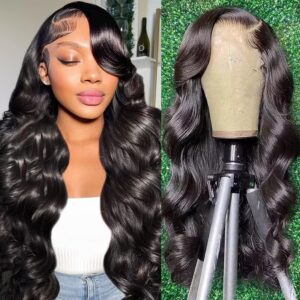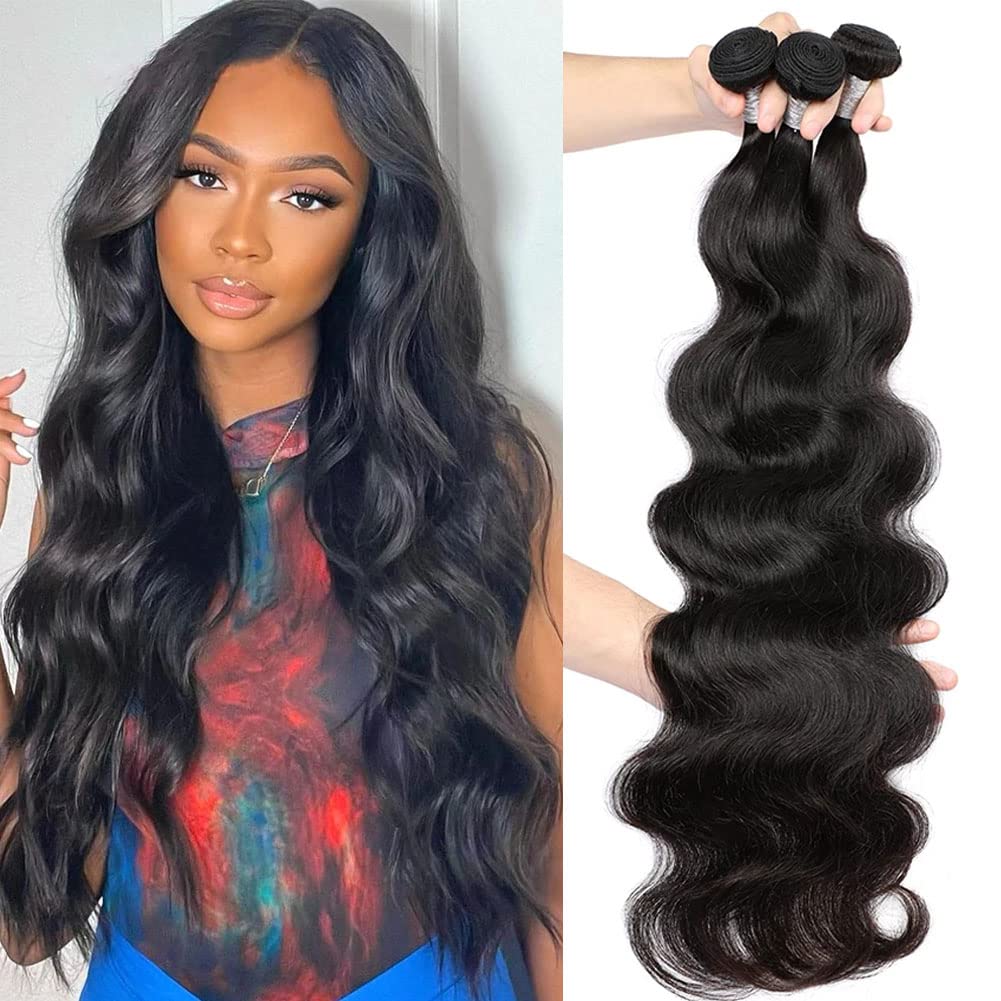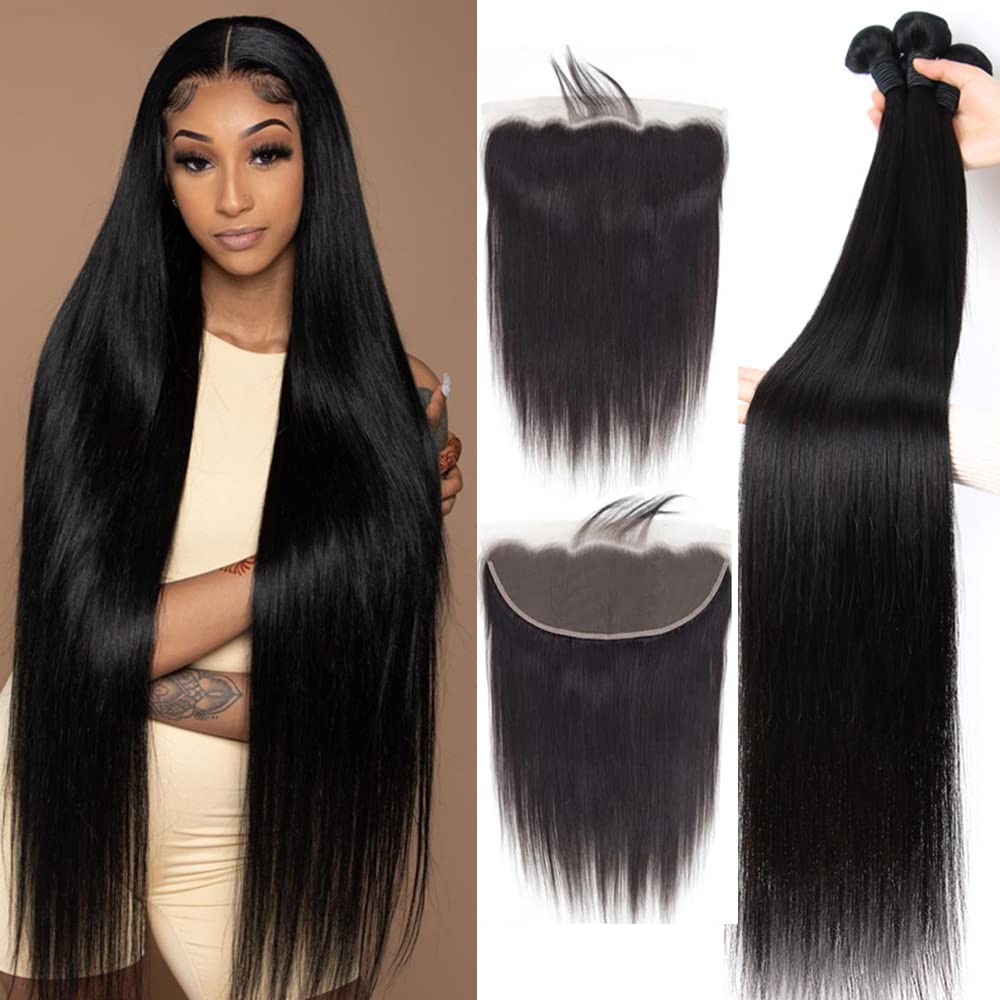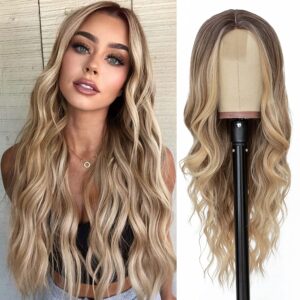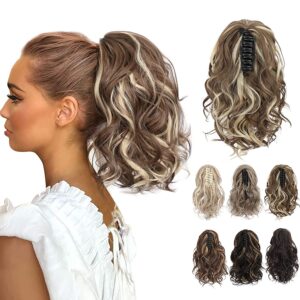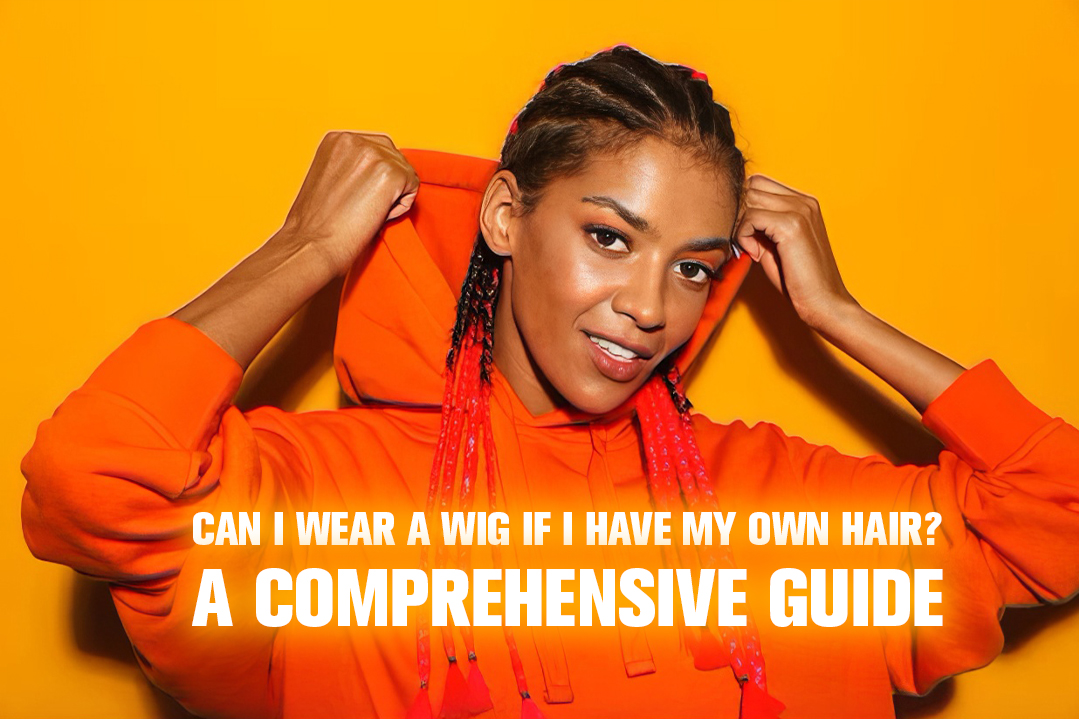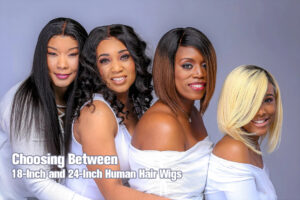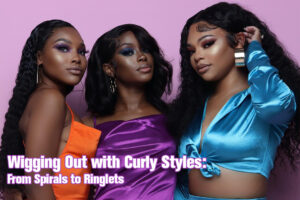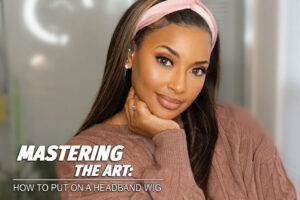Wearing a wig is a popular and versatile choice for those looking to change their hairstyle or cover up hair loss. Many people wonder if it’s possible to wear a wig while still having their own hair. The answer is a resounding “yes!” In this comprehensive guide, we’ll explore the possibilities, considerations, and tips for wearing a wig when you have your own hair.
Why Wear a Wig with Your Own Hair?
Wearing a wig with your own hair offers numerous advantages, making it a popular choice for people of all backgrounds and lifestyles. Here are three key reasons why individuals choose to wear a wig alongside their natural hair:

Style Versatility
Wigs provide a wide range of styling options and possibilities. They allow you to change your hairstyle, color, and length quickly and effortlessly. Whether you want to experiment with a bold new look, try out a different hair texture, or rock a specific style for a special occasion, wigs offer an excellent opportunity to express your personal style without making any permanent changes to your natural hair. This versatility is particularly appealing for those who enjoy diversity in their appearance.
Hair Protection
Frequent heat styling, chemical treatments, and exposure to environmental factors can take a toll on your natural hair. Wearing a wig can act as a protective barrier, shielding your own hair from potential damage. It’s an ideal option for individuals who want to give their hair a break from the stresses of everyday styling or who are going through hair restoration after a medical condition or hair loss. By wearing a wig, you can maintain the health and integrity of your natural hair while still achieving your desired look.
Hair Loss Cover-Up
Many people turn to wigs to conceal hair loss or thinning hair. Whether due to aging, genetics, or a medical condition, hair loss can be a source of self-consciousness and emotional distress for many individuals. Wigs offer an effective and natural-looking solution to cover up bald spots or thinning areas, restoring confidence and self-esteem. Modern wigs, especially lace front and human hair wigs, mimic the appearance of real hair, making it difficult for others to discern that you’re wearing a wig.
Does Wearing a Wig Damage Your Own Hair?
Wearing a wig should not inherently damage your natural hair, provided you take the necessary precautions and maintain a thoughtful approach. In fact, wigs can offer several advantages in terms of protecting your own hair. It’s essential to choose a wig that fits comfortably and doesn’t put undue pressure on your scalp or hair. Make sure the wig cap is snug but not too tight, as excessive tension can lead to hair breakage or discomfort.

Additionally, the choice of wig material is crucial. High-quality wigs made from natural human hair or premium synthetic materials are less likely to cause friction or damage to your own hair. These materials mimic the texture and appearance of real hair, providing a more seamless look. Proper maintenance is also key – regular cleaning and care for your wig will prevent the accumulation of dirt, oils, and bacteria that might indirectly impact your natural hair’s health.
While wearing a wig, it’s essential to be mindful of the hairstyles you choose to wear underneath it. Tight and stressful hairstyles like tight braids, ponytails, or cornrows can lead to traction alopecia, a condition where constant tension causes hair loss. To maintain the health of your natural hair, opt for loose or less restrictive styles when your hair is not covered by the wig. If you have a medical condition or are experiencing hair loss, consider consulting a healthcare professional or dermatologist to ensure that wearing a wig is suitable for your specific situation and to receive expert guidance on protecting your existing hair.
How to Choose the Right Wig If I Have My Own Hair?
Selecting the right wig when you already have your natural hair requires careful consideration to ensure a seamless and natural appearance. Here’s a guide in three paragraphs:

Purpose and Style
Begin by determining your purpose for wearing a wig. Are you looking to experiment with different styles, add volume, cover hair loss, or simply change your look temporarily? Understanding your intention will guide your wig choice. Consider the wig cap style that best suits your needs – full cap, half wig, or lace front. Half wigs are designed to blend with your natural hair and are typically worn at the crown or back of your head. Lace front wigs offer a more natural hairline and are excellent for blending with your own hair.
Material, Color, and Style
The choice of wig material is crucial. You can select from synthetic wigs, which are more affordable and come in various styles and colors, or natural human hair wigs that provide the most realistic appearance and styling options. When choosing the color, pick a shade that closely matches your natural hair or complements your skin tone. Consider the wig’s length and style, such as short, medium, or long, and whether you prefer straight, wavy, or curly hair. Ensure that the wig’s style complements your face shape, as different styles can enhance or balance your features.
Quality and Maintenance
Invest in a high-quality wig from a reputable brand to achieve a more natural and long-lasting look. Quality wigs are less likely to tangle and maintain their shape and style. Carefully maintain both your natural hair and the wig to keep them in top condition. Consult with a wig specialist or hairstylist if you’re uncertain about the right wig for you, as their expertise can be invaluable. Whenever possible, try on the wig before making a purchase to assess the fit, style, and color, ensuring it complements your natural hair and overall appearance.
Choosing the right wig when you have your own hair is a personal decision, and it’s essential to select a wig that aligns with your style and needs. By following these considerations and taking your time to find the perfect wig, you can enjoy a natural and stylish look that enhances your overall appearance.
Steps for Preparing Your Natural Hair for Wear a Wig
Preparing your natural hair before wearing a wig is a crucial step to ensure a comfortable fit and a seamless, natural look. Here are the steps to follow in three paragraphs:

1. Cleanse and Condition
Start by washing your natural hair with a sulfate-free shampoo and a hydrating conditioner. Thoroughly rinse to remove any product residue, ensuring your hair is clean and free from oils and dirt. Conditioning your hair is vital to maintain its moisture and health. Using a wide-tooth comb, gently distribute the conditioner throughout your hair and detangle any knots or tangles. Afterward, let your hair air dry or use a microfiber towel to blot excess moisture, avoiding heat styling tools to prevent damage.
2. Use a Wig Cap
To create a smooth foundation for the wig, wear a wig cap that matches your skin tone. This cap not only holds your hair in place but also minimizes friction between your natural hair and the wig. Ensure that the wig cap is secured snugly but not too tight, as excessive tension can cause discomfort and potential hair breakage.
3. Braid or Twist Your Hair
If you plan to wear a long wig, consider braiding or twisting your natural hair close to your scalp. This technique minimizes bulk and creates a flatter surface, preventing any bulges under the wig. Tuck the ends of your braids or twists under the wig cap and use hairpins or clips to secure them if necessary. If you have a lace front wig, adjust the wig cap and hairline to blend with your natural hairline for a seamless, natural appearance.
By following these steps, you’ll ensure that your natural hair is well-prepped and protected before wearing a wig. This preparation provides a comfortable base for the wig and helps you achieve a natural and seamless look.
How to Blend Your Natural Hair with Wig Hair After Prepare the Natural Hair
Hiding your natural hair effectively under a wig is essential for achieving a seamless and natural look. Here’s how to do it in three paragraphs:

1. Prepare Your Natural Hair
Before donning the wig, make sure your natural hair is clean and well-groomed. Start by washing your hair with a sulfate-free shampoo and conditioner. Rinse thoroughly to eliminate any product residue. Once your hair is clean, allow it to air dry or gently blot it with a microfiber towel. Avoid using heat styling tools, as this can cause damage. To create a smooth foundation for your wig, wear a wig cap that matches your skin tone. This cap will keep your hair in place and minimize friction between your natural hair and the wig.
2. Secure Your Natural Hair
For longer wigs, consider braiding or twisting your natural hair close to your scalp. This technique prevents bulges under the wig and ensures a flatter surface for a more natural fit. Tuck the ends of your braids or twists under the wig cap, and use bobby pins or clips if necessary to secure your natural hair in place. It’s crucial to adjust the wig cap to align with your natural hairline, especially if you have a lace front wig. The right wig cap fit is essential to prevent any discomfort or slippage.
3. Position and Style the Wig
Carefully place the wig on your head, making sure it’s centered and secure on the wig cap. Adjust the wig to align with your natural hairline, particularly with lace front wigs, to create a seamless transition between your natural hair and the wig. When styling the wig, incorporate your natural hair into the overall look. This might involve curling, straightening, or adding waves to ensure a cohesive appearance. Check in the mirror to confirm that your natural hair is well-concealed under the wig. By following these steps, you can effectively hide your natural hair under your wig, ensuring a flawless and natural look while also protecting your own hair.
Conclusion
Wearing a wig when you have your own hair is entirely possible and can be a fun and practical choice. With the right wig choice, prepping your natural hair, and proper care, you can enjoy the benefits of versatility and style without compromising the health of your natural hair. Whether you want to switch up your look or deal with hair loss, wigs can be a fantastic addition to your beauty arsenal. So, the next time you ask yourself, “Can I wear a wig if I have my own hair?” remember that the answer is a confident “yes!”

